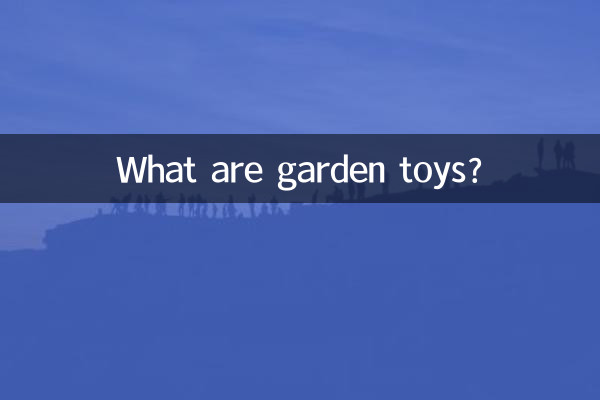What are garden toys?
With the continuous updating of educational concepts, garden-based toys have gradually become a hot topic in the field of early childhood education. In the past 10 days, discussions on garden-based toys across the Internet have mainly focused on their definition, characteristics, application scenarios and differences from traditional toys. This article will focus on these hot topics to provide you with a detailed analysis of the concept and importance of garden-based toys.
1. Definition of garden-based toys

Kindergarten-based toys refer to toys that the kindergarten designs or develops itself based on the educational philosophy, curriculum objectives and children’s development needs. The biggest difference between it and traditional toys is that iteducationalandpersonalization. Kindergarten-based toys are usually closely integrated with kindergarten curriculum and can better meet the learning and development needs of young children.
2. Characteristics of garden-based toys
| Features | Description |
|---|---|
| educational | The original design of garden-based toys is to promote children's cognitive, emotional, social and other aspects of development. |
| personalization | It is customized according to the educational goals of the kindergarten and the actual needs of the children, and is highly targeted. |
| low cost | Many garden-based toys are made from waste materials or natural materials, which are low-cost and environmentally friendly. |
| interactivity | Emphasize the interaction between children, toys and peers to cultivate cooperation and communication skills. |
3. Application scenarios of garden-based toys
Garden-based toys are widely used in daily teaching in kindergartens. The following are several common application scenarios:
| scene | Example |
|---|---|
| regional activities | Put garden-based toys in construction areas, role-play areas and other areas to stimulate children's creativity. |
| Theme courses | Combined with the theme course content, relevant garden toys are designed to deepen children's understanding of the theme. |
| outdoor activities | Garden toys made of natural materials enrich the fun and education of outdoor activities. |
4. The difference between garden-based toys and traditional toys
There are significant differences between garden-based toys and traditional toys in many aspects. The following is a comparison between the two:
| Contrast Dimensions | Garden toys | traditional toys |
|---|---|---|
| Original design intention | Educational goal-oriented | Focus on entertainment functions |
| Material source | Mostly waste or natural materials | Industrialized production, mostly plastics and other materials |
| Usage | Emphasis on interaction and exploration | Mostly one-way operations |
5. Development trends of garden-based toys
With the continuous advancement of early childhood education concepts, the development of garden-based toys also shows the following trends:
1.Technology integration: Some kindergarten-based toys have begun to incorporate simple technological elements, such as programming building blocks, to cultivate children's logical thinking ability.
2.Environmental protection concept: More and more kindergartens focus on using environmentally friendly materials to make kindergarten toys and advocate sustainable development.
3.parent involvement: The kindergarten encourages parents to participate in the production process of kindergarten-based toys to enhance the effect of home-based co-education.
6. How to design high-quality garden-based toys
Designing high-quality garden toys needs to follow the following principles:
1.child-centered: The design of toys must meet the age characteristics and development needs of children.
2.security: Ensure that the materials and structure of toys are safe to avoid harm to young children.
3.Operability: Toys should be easy for children to operate and stimulate their desire to explore.
4.educational value: Toys should be able to promote children's cognitive, emotional, social and other aspects of development.
Conclusion
As an important part of early childhood education, garden-based toys have increasingly prominent educational value and practical significance. Through personalized design and scientific application, garden-based toys can better meet the development needs of young children and provide strong support for their growth. In the future, with the continuous innovation of educational concepts, garden-based toys will surely usher in a broader development space.

check the details

check the details